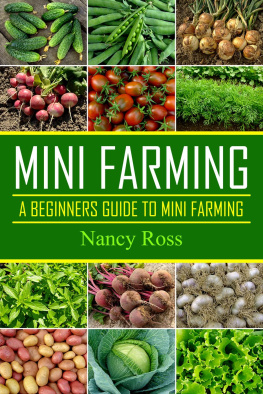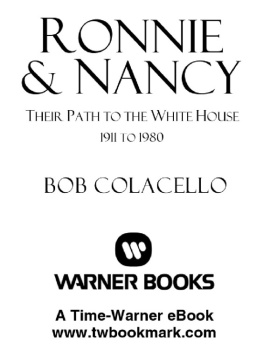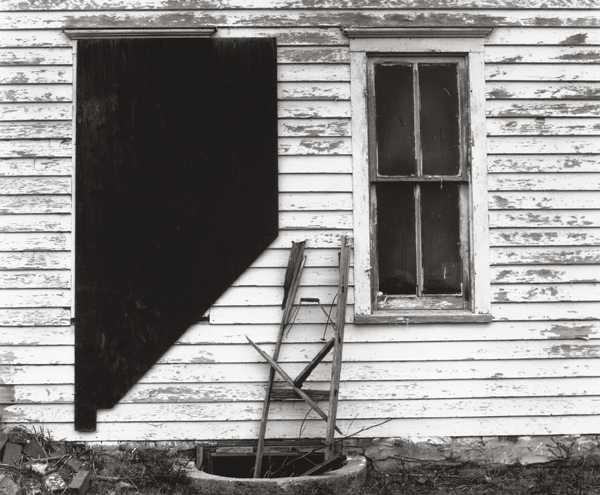THIS PLACE, THESE PEOPLE
THIS PLACE, THESE PEOPLE
LIFE AND SHADOW ON THE GREAT PLAINS
PHOTOGRAPHS BY NANCY WARNER TEXT BY DAVID STARK
COLUMBIA
UNIVERSITY
PRESS
NEW YORK
Columbia University Press
Publishers Since 1893
New York Chichester, West Sussex
cup.columbia.edu
Copyright 2014 David Stark and Nancy Warner
All rights reserved
E-ISBN 978-0-231-53790-2
Library of Congress Cataloging-in-Publication Data
Warner, Nancy, 1951
This place, these people : life and shadow on the Great Plains /photographs by Nancy Warner ; text by David Stark.
pages cm
Photographs by Nancy Warner accompanied by the words of Nebraska farmers and residents.
ISBN 978-0-231-16522-8 (cloth : alk. paper) ISBN 978-0-231-53627-1 (electronic)
1. NebraskaPictorial works. 2. Farm lifeNebraskaPictorial works. 3. NebraskaRural conditionsPictorial works. I. Stark, David, 1950 II. Title.
F667.W37 2013
978.2dc23
2013000946
A Columbia University Press E-book.
CUP would be pleased to hear about your reading experience with this e-book at .
Cover photograph: Nancy Warner
Cover and book design: Lisa Hamm
References to websites (URLs) were accurate at the time of writing. Neither the author nor Columbia University Press is responsible for URLs that may have expired or changed since the manuscript was prepared.
Columbia University Press would like to express its appreciation for assistance given by
Furthermore: a program of the J. M. Kaplan Fund in the publication of this book.
To our family
In all my life Ive never seen anything so crowded, so full of something, as the rooms of a vacant house.

WRIGHT MORRIS,
The InhabitantsCONTENTS
Afterword: Life and Shadow on the Great Plains
DAVID STARK
A ROUND THE TIME this book went into production, I read the essay Small Rooms in Time by Ted Kooser, the Nebraskan poet. This sentence struck me: I began to think about the way in which the rooms we inhabit, if only for a time, become unchanging places within us, complete in detail.
The photographs in this book tell stories of different farm places. I made them between 2001 and 2008, in and around Cuming County, Nebraska, where my great-grandfather homesteaded and my parents grew up. People in the area helped me find and get access to many of the places. They were amused and curious about why these old broken-down buildings warranted so much of my attention. In 2008 I installed the first large exhibit of the series at the Great Plains Art Museum in Lincoln. The photographs evoked strong emotional reactions from viewers. During this and subsequent exhibit receptions, people approached me with memories and stories triggered by details in the images.
My cousin David Stark first learned of the project when Black & White magazine published a selection of the photographs and an interview with me. He was intrigued. During a visit he made to San Francisco in 2010, we got the idea to collaborate on this book. We traveled to Nebraska then, and again in 2011. We sought out and talked to relatives and other people in Cuming County, most of whom had lived in these places. The book began to take shape.
Those voices are recorded here just as David heard them. The pairings of the photographs with the text are based not on specific stories, or even their connections with the places shown, but on the voices themselves: the sounds, rhythms, and emotions that seemed to best set off the feeling of each photograph.
No single photograph, story, or voice can entirely capture the farming way of life, or the American way of life. So as you look through this book, I hope you will rediscover within yourself some of the rooms and places you once inhabitedcomplete in detail.
Nancy Warner, January 2013
We wrapped a chain around that house and hitched it to a tractor, but we couldnt bring it down.
Wed pulled off the boards about waist high and cut notches on all these beams here and here and here, wrapped the chain all around it at the notches.
The tractor died, the house didnt.
That tractor groaned and wheezed, but it died and we couldnt get it started again. It was a tough old tractor, but an even tougher house.
That was about five years ago. Thereve been wind storms you would think wouldve done it, but nothins bringing that house down.
Its still there.

Les
We had chairs lined up across the waynot too close, we didnt want anybody to get hurt. I dont know how many chairs, but it must have been a bunch because all kinds of people were here. I cant think now who was all here. I know the neighbors came over for the big show. Nothing happened.

Ferny
We raised hogs, farrow to finish, from babies to the butcher. Those sows would be having babies, but Id want to go bowling. So Id reach right in and pull those babies out. I didnt care. I wanted to go bowling.
I liked my pigs. People think theyre ugly. But I liked my pigs.

Marian
Dad had me on a tractor from real early. He didnt care if I was young. He had me on that tractor. I couldntve been ten. He went, Get on that tractor and drive it over here. I mustve watched my brother from riding on the tractor with him, because I managed to get it moving.
I started raking hay. Later I drove the sweep for sweeping up hay. We had an old-time sweep. Theyd taken an old car, stripped it down to the frame, engine, and gearbox, converted it to front-wheel drive, and put the seat and steering wheel in the back, like a combine with the sweep out in front. That thing would go. I loved that. It drove like a car and it went so fast. You could drive this way and that.
I suppose itd been smarter to just go down your row. But you know.... And by the time youd pretty much finished the field, thered be spots here and there that youd need to race all over to sweep up.
















 WRIGHT MORRIS, The Inhabitants
WRIGHT MORRIS, The Inhabitants
 Les
Les

